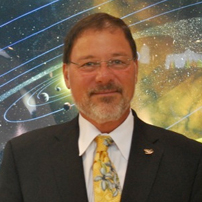The View From Here
The Moon and the Stars are Calling, and We Are Ready to Answer
Written by: developer
 Bali, Indonesia — Zipping across the glass-like Bali Sea, the pre-dawn air warm and fragrant with flowers and incense, the full moon looms brightly over Mount Agung and Seraya Bay, the distant stars fading. Heading toward a dawn scuba rendezvous with the famous wreck of the USAT Liberty, the moon and stars above seem as naturally a part of the human experience as the air, land and sea below.
Bali, Indonesia — Zipping across the glass-like Bali Sea, the pre-dawn air warm and fragrant with flowers and incense, the full moon looms brightly over Mount Agung and Seraya Bay, the distant stars fading. Heading toward a dawn scuba rendezvous with the famous wreck of the USAT Liberty, the moon and stars above seem as naturally a part of the human experience as the air, land and sea below.
Far from the politics and worries of “civilization,” being one with the celestial bodies above, sailing through space as we have sailed over (and under) the seas, seems a fundamental birthright for we who are made of stardust.
The moon and stars have always called, and they are calling still. And we are closer to answering that call than we have ever been before.
I’m here in Bali to participate in two events: an Asia-Pacific regional meeting of the Space Generation Advisory Council, and the 22nd Meeting of the Asia-Pacific Regional Space Agencies’ Forum, or APRSAF. Both events are strong indicators of the bright future of the global space community, and the great things we are poised to achieve.
The Space Generation Advisory Council, or SGAC, is an important partner of the Space Foundation as we reach out to new generations of leaders in our mission quest, To advance space endeavors to Inspire, Enable and Propel Humanity.
SGAC is a global organization of university students and young space professionals. Its primary work is in advancing space policy development, representing the world’s young adults in space policy to the United Nations Office for Outer Space Affairs (UNOOSA) and other international organizations. In doing so, it is performing amazing work in building a skilled, motivated and highly networked cadre of young space leaders.
SGAC’s Fusion Forum, held annually in conjunction with the Space Foundation’s Space Symposium, is the seminal gathering of this global clan of space leaders of the future, but regional meetings, like the one held here at Udayana University, also play an important role. In just its second year, this forum has attracted young people from Indonesia, Japan, China, India, Brazil, South Korea, Thailand, Malaysia, and the U.S. Over the two days of the workshop they have heard from “greybeards” like me, and jointly tackled themes like Space Security, Space Applications, the potential role of commercial space companies in the region, and the growing interest in fostering strategic partnerships that can strengthen the space competitiveness of the emerging economies in the region.
The exploration and development of space is already an intensely, and necessarily, international affair, and the workshop participants here are committed to seeing the Asia-Pacific region play a larger role. They will succeed. Shout-outs here go to event managers Zihua Zhu (China) and Junichi Hasegawa (Japan); advisor Yusuke Muraki (Japan); and especially to project coordinator Soyoung Chung (S. Korea) and Happy Rumiris (Indonesia), who went above and beyond the call in getting my wayward taxi driver safely to the venue!
Of course, the main event here is the 22nd meeting of APRSAF — an amazing alliance of space agencies and related organizations from 48 countries, ranging from Canada in the north and Australia in the south, to Israel and the UAE in the middle east, to Russia and Vietnam and even European countries like the United Kingdom, the Netherlands, and Italy. The U.S. also participates, with lifting over the years shared among NASA, NOAA, and the State Department and supported by private companies and non-governmental organizations.
APRSAF currently organizes four working groups — Space Applications, Space Technology, Space Environment Utilization, and Space Education — to share information about the activities and future plans of each country and region in these respective areas. APRSAF also supports the establishment of international projects as solutions for common issues, such as disaster management and environmental protection, so that participating parties will benefit from mutual cooperation. It operates in an “open framework,” so that participants can focus their efforts in alignment with their national and regional interests. It is a successful formula that can boast some notable successes, including:
- Sentinel Asia for disaster management
- SAFE (Space Applications For Environment) for environmental issues
- Climate R³ (Regional Readiness Review for Key Climate Missions)
- Kibo-ABC (Asian Beneficial Collaboration through “Kibo” Utilization)
The focus will be on the future, and on building partnerships and networks that will help enable the global space community to succeed in the accelerated development and utilization of space. There will be intense focus on the value of space, and its importance for capacity building in science, technology, the economy and international relations.
The View from Here is that organizations like SGAC and APRSAF are playing a critical role in preparing all humanity for our journey to the stars, and in ensuring that all of us share in the benefits and wonder of the experience. The moon and the stars are calling, and we are ready to answer.
Peace on Earth,
This article is part of Space Watch: December 2015 (Volume: 14, Issue: 12).
